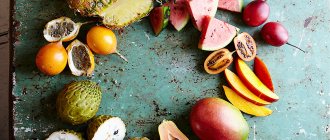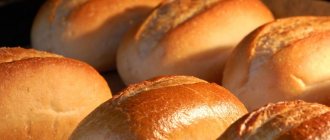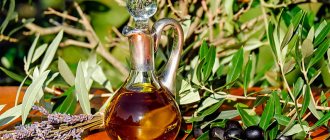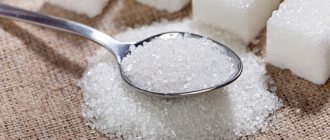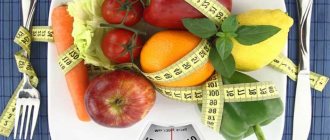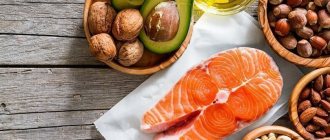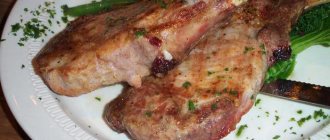List of the lowest calorie fruits for weight loss
Nutritionists strongly recommend including fruits and berries in your diet. They increase vitality, saturate the body with vitamins, and improve metabolism. Even if you replace one meal with a serving of fruit, you can reduce your daily caloric intake, which will promote weight loss.
Fruits contain fiber and structured water. Fiber removes toxins from the body, normalizes the gastrointestinal tract, stimulates intestinal motility, normalizes cholesterol levels and prevents blood glucose from rising sharply.
Structured water normalizes the body's acid-base balance, improves metabolism and removes toxins. It contains vitamins and microelements necessary for the passage of important physiological processes, maintaining the health and beauty of the body.
Eating fruit while losing weight is not only possible, but even necessary. The main thing is to choose the right fruits for your diet and control the amount of fruits eaten. If your goal is to lose weight, it is advisable to eat low-calorie fruits with a low glycemic index. Nutritionists recommend giving preference to those fruits that contain no more than 100 kcal per 100 g, and ideally up to 50 kcal.
You can understand how dangerous a fruit is for your figure, even without knowing the exact value of its calorie content, by its taste. The sweeter the fruit, the higher the calorie content it is. And vice versa, the more sour the fruit, the fewer calories it contains. The most high-calorie foods are grapes, persimmons, and dried fruits. The fewest calories are in apples, kiwis, and citrus fruits. Below is a list of 10 fruit “favorites” of nutritionists.
10th place – bananas
Although bananas are not the lowest-calorie fruit, and they contain natural sugars and starch, even when losing weight, nutritionists do not prohibit their consumption, with one caveat - in small quantities.
The calorie content of bananas depends on their degree of ripeness. Soft yellow fruits contain about 95 kcal per 100 g, and dense, unripe fruits contain about 70 kcal. Therefore, when losing weight, it is better to choose greenish bananas that contain less sugar.
Although the calorie content of bananas is higher than that of apples, pears, apricots or plums, their pulp perfectly satisfies hunger. It does not irritate the gastric mucosa because it contains a minimal amount of organic acids.
9th place - apples
According to Nutrition magazine, eating an apple before your main meal speeds up your metabolism, which is beneficial for weight loss. Just 5 apples are enough to provide the body with the daily requirement of fiber. Of course, it is better to eat more than just apples, but to make the menu more varied.
Apples, depending on the variety, contain from 35 to 55 kcal per 100 g of pulp. The lowest-calorie varieties with a sour taste and green skin: Golden, Granny Smith, Papirovka, Antonovka. Red apples have a higher calorie content. The sweetest varieties are considered to be: Red Delicious, Gala, Starking.
Important! Apples themselves are low-calorie and healthy, but only fresh. When adding them to a pie, baking with honey and nuts, the calorie content of the fruit increases significantly.
8th place – pears
Pears are rich in coarse dietary fiber - fiber that improves the functioning of the gastrointestinal tract, helps remove harmful substances from the body, and creates a feeling of satiety. This fruit is often included in the diet when losing weight due to its low calorie content. 100 g of pear contains about 44 kcal, and one medium-sized fruit contains about 70 kcal.
Pear improves a person’s emotional state when losing weight. It contains magnesium, which has a beneficial effect on the nervous system and helps the body cope with stressful situations more easily.
When losing weight, pears should be eaten with the skin on. It is not advisable to cut it off, since it contains valuable dietary fiber. It is best to include pears in your diet as a dessert, 30 to 50 minutes after the main meal. It is better not to eat them on an empty stomach, as fiber can cause discomfort in the stomach, and organic acids can increase the feeling of hunger and lead to overeating.
7th place – watermelon
Although watermelon is a berry, we are used to classifying it as a fruit. Watermelon consists of 90% water, so it is often used in the preparation of dietary rations.
100 g of watermelon pulp contains about 30 kcal. When consumed, the kidneys are cleansed, the body’s water balance is normalized, and swelling is reduced. It is especially useful for those who cannot train themselves to drink 2 liters of water a day. Watermelon contains the amino acid arginine, which promotes fat burning.
However, watermelon contains a lot of sugars - easily digestible glucose and fructose, and you can eat a lot of it without noticing it. It is important to control the amount of product eaten and not overuse it. As for popular watermelon diets, nutritionists warn about their dangers: they are unbalanced, create a high load on the kidneys, and can cause indigestion, flatulence, and abdominal pain. Unloading on watermelons can be carried out for no longer than 1 – 2 days and in the absence of contraindications. At the same time, you should not eat more than 2 kg of watermelon pulp during the day.
6th place – grapefruit
Grapefruit is famous for speeding up the fat burning process. It contains bioflavonoids that activate the process of weight loss. Eating grapefruit improves digestion and speeds up metabolism.
In addition, citrus fruits are low-calorie fruits; they can be the best choice for weight loss. 100 g of grapefruit pulp contains about 42 kcal. By eating half a grapefruit half an hour before meals, you can quickly feel full, which means reducing the portion size of the main dish.
However, it is important to remember that not everyone can eat grapefruit. For ulcers, gastritis, and increased stomach acidity, citrus fruits are contraindicated. It is especially dangerous to consume them on an empty stomach.
5th place – kiwi
Kiwi is a low-calorie fruit. 100 g contains about 60 kcal. One medium-sized fruit is only 70 - 80 kcal. But how much benefit!
A medium-sized kiwi fruit contains the daily dose of vitamin C for an adult. Kiwi contains potassium, phosphorus, magnesium, calcium, iodine, and zinc. They ensure healthy skin, hair, nails, bones, increase the tone and immunity of the body.
Kiwi contains many organic acids. They stimulate the secretion of gastric juice, improve the digestion of food, prevent its stagnation in the gastrointestinal tract, and remove waste and toxins from the body. Another advantage is that kiwi dulls the feeling of hunger and discourages cravings for sweets.
4th place – plum
Plum is a low-calorie fruit that has a cleansing effect on the body. Both of these properties have a beneficial effect on the process of losing weight. Fruit acids and fiber in plums normalize the digestion process and improve intestinal function. The calorie content of fresh plums is about 45 kcal per 100 g. In order not to slow down the weight loss process, you should limit yourself to 150 - 200 grams of plums per day.
Dried plums - prunes - are a higher calorie product, although no less beneficial for the body. During the period of weight loss, prunes can also be included in the diet, but in small quantities - up to 50 g per day. The calorie content of prunes is 250 kcal per 100 g. Dried plums have a laxative effect. Constipation often occurs when following high-protein diets. Eating prunes in the evening and drinking enough water throughout the day will help eliminate this problem.
3rd place – apricot
Apricots can be good aids in losing weight. 100 g of fruit contains about 40 kcal, and one medium-sized fruit contains about 18 kcal. One fruit contains about 3 g of carbohydrates and 1 g of fiber.
When losing weight, apricots can be added to porridge, cottage cheese, yogurt, cottage cheese casseroles, replacing sugar with them. Dishes with apricots are aromatic, nutritious and more dietary than those with sugar.
The vitamin and mineral composition of apricot helps speed up metabolism. Eating apricots is useful for people with obesity and slow metabolism. It is enough to eat 2–3 fruits a day so that the body receives the nutrients it needs and excess carbohydrates are not stored as fat.
2nd place – oranges
Orange is the lowest calorie fruit and is ideal for weight loss. 100 g of orange pulp contains only 36 kcal, 8 g of carbohydrates, 0.9 g of protein and 0.2 g of fat. An equally important indicator for those losing weight is the glycemic index of orange. It is low, about 43 units. These numbers indicate that orange is an excellent product for losing weight.
There are even orange mono-diets, which involve eating only oranges for several days. But such diets are unbalanced and can cause more harm to the body than good. It is especially dangerous to follow them for people with digestive problems, high acidity, ulcers and gastritis.
1st place – pineapple
The calorie content of pineapple is slightly higher than other fruits in our rating, but its benefits for weight loss are much greater. Pineapple has become famous as a fat burner product. Its pulp contains the enzyme bromelain, which speeds up metabolism and improves fat and protein metabolism.
100 g of pineapple pulp contains only 48 kcal. A serving of pineapple (150 - 200 g) will not harm your figure and will even speed up the process of losing weight.
However, it is important to understand that simply adding pineapple to your daily menu is not enough to lose weight. Moreover, if a portion of fruit becomes an “add-on” to the main diet, the weight may “creep” up. Pineapple should be used to replace sweets, if they were present in the diet, or other carbohydrate-containing foods, maintaining the balance of BJU. Only by creating a calorie deficit in your diet can you start the process of losing weight.
Dried fruits for weight loss are a great snack
Anyone who has ever lost weight knows perfectly well how hard it is to sit on kefir, buckwheat and protein diets for days and weeks! How difficult it is to endure the monotonous, insipid taste of the same products!
I want to throw everything to hell! And figure, and kilograms, and beauty!
The hand reaches out to something sweet. And it’s true, as soon as you eat at least a piece of something “forbidden,” life immediately improves!
In such a situation, dried fruits are very helpful! This product is very popular and is quite often used in various diets. Of course, dried fruits are much higher in calories than their fresh counterparts, but if you strictly follow the consumption standards, know when to stop and don’t eat handfuls of them, then they won’t have much effect on your weight loss.
The main advantage of dried fruits is that it is a completely natural product, usually devoid of all kinds of flavor enhancers, dyes, artificial flavors and food additives.
EXPERT ADVICE : According to nutritionists, dried fruits can and even should be eaten when losing weight, but in limited quantities.
They are great as a snack between meals. There should not be more than 5 such snacks.
Try to eat no more than 3-5 dried fruits per snack. Don't forget that they still contain calories!
Dried fruits for weight loss should be chosen with a low GI to avoid a sharp jump in insulin. They usually take a long time to digest and do not cause a sharp increase in blood sugar.
The most useful dried fruits for weight loss
Prunes . The most suitable dried fruit for quick weight loss. 100 grams contain 240 calories.
To lose extra pounds, you can eat no more than 5 prunes in the morning. Or use the same 5 berries, but during the day as a snack to satisfy your hunger.
Dried apricots . A healthy dried fruit that perfectly suppresses appetite and contains a lot of fiber. Its calorie content is 241 calories per 100 grams.
Dried apples and pears. An ideal option for those who want to get rid of extra pounds. They have a very low GI. You are allowed to eat no more than 20 grams per day.
Dried cherries . The calorie content of dried fruit is 290 calories per 100 grams. It speeds up metabolism and improves metabolic processes.
Of course, all dried fruits are very high in calories, but unlike candies and other sweets, these are natural, organic products, and not “empty” calories of unknown origin.
In addition, they will not give a sharp jump in blood sugar, like a cake or pastry, and will protect you from sudden weight gain.
TOP 5 lowest calorie berries you can eat on a diet
Berries contain a whole range of vitamins and microelements that improve overall health and metabolism. They contain bioflavonoids and antioxidants, which accelerate fat burning, as well as fiber and organic acids, which improve digestion and eliminate harmful substances from the body. So regularly eating berries is an effective way to speed up the weight loss process. But not all berries are suitable for the diet of those losing weight. It is important to choose low-calorie, low-sugar fruits. Our TOP includes the 5 best berries for weight loss.
5th place: cranberry
Cranberries improve digestion by stimulating the production of gastric juice. It stimulates intestinal motility and accelerates its cleansing. Cranberry is a powerful antioxidant. It removes waste and toxins, strengthens the immune system, and suppresses the proliferation of pathogenic flora in the body.
Cranberries are low in calories. 100 g of berries contain 45 kcal. Berries are 88% water. Product BJU:
- proteins – 0.4 g;
- fats – 0.1 g;
- carbohydrates – 12.2 g.
To speed up the weight loss process, you can drink a glass of cranberry juice daily, diluted with water in a ratio of 1:5. To improve the taste of the drink, you can add half a teaspoon of honey.
1 – 2 times a week you can arrange fasting days on cranberries. To make it more comfortable to follow a diet, you can eat a portion of oatmeal with water for breakfast, and during the day drink cranberry juice, diluted cranberry juice and eat fresh berries. In a day, you can lose up to 2 kg on cranberries, activate your metabolism, and normalize your appetite. Such unloading is contraindicated for gastrointestinal diseases and increased stomach acidity.
4th place: raspberry
Fresh raspberries can replace a sweet dessert. It is aromatic and has a pleasant rich taste, but unlike sugar-containing desserts, a glass of raspberries contains less than 100 calories. The energy value of 100 g of berries is 46 kcal. BJU:
- proteins – 0.8 g;
- fats – 0.5 g;
- carbohydrates – 8.3 g.
Berries contain about 83% water. Raspberries are rich in dietary fiber. 100 g of fruit contains almost 3.8 g of fiber. When eating raspberries, discomfort from the gastrointestinal tract rarely occurs. It is easily digested without creating heaviness in the stomach. The glycemic index of raspberries is lower than that of other berries, due to which, when consumed, there is practically no increase in blood sugar, which means satiety lasts longer. Raspberries have a mild diuretic effect, which allows you to remove excess fluid from the body and eliminate tissue swelling.
Raspberries make a delicious snack on their own, but they can also be added to a variety of dishes. Nutritionists recommend including raspberries in your daily menu.
3rd place: strawberry
Strawberries are a juicy and sweet berry that contains a minimum of calories. 100 g of strawberries contain only 41 kcal. The berry contains about 87% water. Product BJU:
- proteins – 0.8 g;
- fats – 0.3 g;
- carbohydrates – 7.7 g.
During the berry season, you can easily lose a couple of extra pounds by simply replacing your usual sweets with fragrant strawberries. You can use it to prepare low-calorie desserts: strawberry mousses, jelly, sorbet. Strawberries can be a tasty addition to cottage cheese, porridge, and yogurt.
2nd place: blueberries
The low calorie content of blueberries makes them a good assistant for weight loss. On a diet, many experience an increased feeling of hunger, especially if the diet has been sharply reduced. Snacking on blueberries will help satisfy your hunger without harming your figure. 100 g of berries contain only 37 kcal. A glass of blueberries can be a substitute for dessert, a light afternoon snack, or a second dinner before bed. A couple of tablespoons of blueberries thrown into porridge or cottage cheese will turn a boring diet dish into a delicious treat.
1st place: black currant
Restrictions in food products during a diet can provoke hypovitaminosis. A lack of vitamins leads to loss of strength, sleep problems, deterioration in the appearance of skin, hair and nails, and mood swings. Black currants, which are also one of the least high-calorie berries, can prevent the problem.
This berry contains high doses of vitamins and minerals, organic acids and bioflavonoids. At the same time, its calorie content is very low - about 40 kcal per 100 g. The glycemic index of black currant is 15 units. This makes currants an ideal product for losing weight. When consumed, carbohydrates are slowly absorbed by the body, without causing a jump in glucose levels and providing long-term satiety.
Note: you can also include red and white currants in your weight loss menu. They have similar caloric content, but they contain less nutrients.
Benefits and calorie content of dietary fruits
In order to create an individual weight loss diet using fruits, you need to understand their beneficial properties.
Grapefruit
Rich in fiber, vitamins, pectin (relieves bad cholesterol), as well as sodium, which suppresses hunger. For those who adhere to a diet for weight loss, it is recommended to consume it 20 minutes before meals (with ½ citrus), which guarantees a reduction in the subsequent portion of lunch or dinner eaten.
Grapefruit is often labeled as a negative calorie fruit.
This is due to the fact that eating 100 g of citrus brings only 32 kcal, but the body spends much more energy to digest and assimilate it. This is responsible for the fat burning effect. The daily norm for introducing grapefruit into the diet of a losing weight person is 1 fruit. The duration of this diet is 30 days.
Avocado
The exotic fruit contains up to 75% fatty components, but they are quickly absorbed without interfering with the weight loss process. The fruit accelerates metabolic processes in the body and contains a natural fat burner (natural amino acid L-carnitine, which increases energy production in muscle cells and improves blood flow).
Avocado
An important factor is vitamin B5, which is part of the fruit, which lowers the level of stress hormones and can reduce the risk of depression, which is important for long-term weight loss. Avocado is a filling and nutritious product, so 1 - 2 fruits a day can replace a full lunch or dinner.
There is a 5-day fruit diet based on avocados, following which you are allowed to eat 5 pieces per day. This food system includes only avocado or its combination with meat, fish, grains, vegetables and dairy products.
Sample menu for 1 day: in the morning – ½ avocado + 50 g of low-fat cottage cheese, at lunch – a salad of a mixture of tomato, cucumber, 1 egg, green onion and half an avocado, in the evening – part of an avocado + 1 egg + 100 g of boiled lean meat. With the help of such an avocado diet, you can say goodbye to 5 kg of excess weight.
Lemon
It is often called the best remedy for losing weight at home, since citrus is available in stores, inexpensive, suitable as a seasoning for any dish, can be stored in the cold for a long time, and most importantly, it actively helps burn fat. If you consume lemon along with the zest, then digestion processes are normalized, blood sugar levels are lowered, and toxins formed during the breakdown of fat cells are eliminated.
Lemon
To achieve maximum benefits from citrus, it is recommended to grind a whole lemon with zest, season with honey and eat during the day (honey in this case softens the effect of citric acid on the stomach wall).
Plums
Plums have a slight laxative effect, so it is not recommended to eat more than 200 g per day. It is better to eat plums in the intervals between main meals, fresh, or prepare jelly, compote or smoothies with vegetables from them. By introducing them into your diet on an ongoing basis, you can achieve a weight loss of 5 kg in 2 - 3 weeks.
Papaya
Many compare it to boiled carrots in taste and consistency, but it has an unsurpassed aroma and goes well with other fruits. Papaya contains two digestive enzymes (papain and chymopapain), which help soften protein foods (especially meat), and also restore metabolism, improve the absorption of nutrients from food and cleanse the digestive system of breakdown and oxidation products (especially fats).
Due to its low calorie content (40 kcal per 100 g) and minimal amount of natural sugars, papaya can be consumed without restrictions.
A pineapple
This is the favorite fruit of all women and men who are losing weight, and is also often used in medical and biologically active preparations for weight loss. The popularity of pineapple is explained by the presence of a large amount of coarse fiber, which is part of bromelain (an enzyme that stimulates fat burning), low calorie content (46 kcal) and unsurpassed taste and aroma.
It is more correct to consume it before meals, only in fresh (not canned) form and always with a hard core (it contains the most bromelain).
A pineapple
An additional useful bonus is the vitamin and mineral abundance of the fruit pulp (vit. C, A, E, PP, group B, calcium, potassium, iodine, magnesium, copper, manganese, iron, phosphorus, zinc), which helps prevent stress and strengthens the body's defenses.
Kiwi
An excellent fruit for accelerating the digestion process, as it participates in the breakdown of protein compounds and fats, removes cholesterol and thereby cleanses blood vessels. Kiwi contains natural carnitine, a plant-based fat burner.
Kiwi
It is better to eat kiwi after the main meal, after 1 hour. Especially recommended for overeating or heavy stomach. The daily norm of kiwi for an adult when losing weight is up to 6 fruits. It is allowed to carry out fasting and cleansing days on kiwi, but no more than 1 - 2 times a week. During the day, it is recommended to eat up to 2 kg of kiwi and drink up to 1.5 liters of 1% kefir.
Pear
It is used infrequently in diets and mainly as a source of fiber, as well as to cleanse the body of toxic products that are formed when body fat decreases. And if you consider that the pear is low-calorie (47 kcal per 100 g), contains many vitamins (C, E, K) and microelements, then it will be an excellent alternative to apples and will diversify your diet menu.
Orange
The main advantage of all citrus fruits and especially orange is the satisfaction of emotional hunger (when you want to eat something in front of the TV or with everyone for company in the absence of physiological hunger), as well as improving mood and fragrant air in the room.
Orange
In addition, oranges affect the digestion process, namely the fatty components of previously absorbed food, preventing them from being absorbed. Therefore, these fruits are always present at ceremonial feasts.
Green apples
The most popular and affordable fruit for fasting days and diets. Since apples contain a lot of hard-to-digest fiber, the body spends a lot of energy on their digestion and absorption. The consequence of this is the normalization of stool and a slight laxative effect.
And the presence of ascorbic acid helps improve immunity. If you follow the apple diet, you can consume up to 2 kg of fresh apples per day.
passion fruit
An exotic and very aromatic fruit that has a mild laxative effect. Passion fruit contains substances (alpha hydroxy acids) that moisturize the skin and increase elasticity, which is very helpful in sagging skin after losing a lot of kilograms. Passion fruit contains 68 kcal and 8 g of sugar. The daily norm for weight loss is 5 - 6 fruits.
passion fruit
However, it is worth considering that the seeds contain a substance (harman) that has a hypnotic effect.
What fruits and berries should you not eat when losing weight?
To lose weight, it is important to create a calorie deficit in your diet. This can be made easier by including low-calorie foods in the menu and avoiding high-calorie foods. For those who are trying to lose excess weight, it will be useful to know which fruits and berries should be avoided.
The most high-calorie foods are:
- grapes - contains about 70 kcal per 100 g, and almost all of them are carbohydrates - simple sugars;
- avocado - the calorie content of the pulp is about 160 kcal, but many nutritionists consider avocado an indispensable product, including for those losing weight, since it contains healthy fats necessary to maintain body beauty and hormonal balance;
- tamarind - sweet fruits contain about 230 kcal per 100 g, their consumption can cause rapid weight gain;
- durian - an exotic fruit with tasty pulp with an oily texture, the calorie content of which exceeds 140 kcal;
- serviceberry - the berries are very sweet, they contain a lot of sugars, although the calorie content is slightly higher than other berries, and is 47 kcal;
- dried fruits - due to the loss of water by fruits, the concentration of sugars in them increases, and the calorie content increases, the number of calories depends on the type of dried fruit, for example, 100 g of raisins contains about 290 kcal, prunes - about 250 kcal, dried apricots - about 240 kcal, figs - 260 kcal .
The fact that a product is high-calorie does not mean that its use should be completely abandoned. A few grapes or 2 - 3 dates a day will not cause excess weight gain, especially if a person is counting calories. But you shouldn't overeat.
What fruits should you not eat on a diet?
Fruits for weight loss and fat removal will bring results if they are consumed in the right combination with protein foods. There are quite high-calorie fruits, the consumption of which is not allowed (for a certain time) in most dietary nutrition systems. The exception is mono-diets on prohibited fruits (for example, banana or avocado).
What fruits should you not eat on a diet?
Some fruits that are not recommended for weight loss on a mixed diet include:
- bananas, due to the high amount of carbohydrates (21%);
- avocado - due to its significant fat content (15%) and calorie content (160 kcal) compared to other fruits;
- grapes, due to the presence of excessive levels of sugars (from 18 to 40% depending on the variety);
- dates are fresh or dried, because they contain about 50% sugar;
- persimmon, because it has a high percentage of sugar (21%) and significant calorie content (1 fruit has about 130 kcal);
- figs, due to a very high amount of sugar (up to 71%);
- mango, since 100 g contains 135 kcal;
How many fruits can you eat per day?
You can often hear about how beneficial fruits and berries are for health, and that during the summer months it is important to replenish the body’s vitamin and mineral reserves. But they contain simple carbohydrates, in particular glucose and fructose, which increase blood sugar. Glucose makes us feel full, and fructose, on the contrary, suppresses the production of the satiety hormone, leptin, and does not interfere with the synthesis of the hunger hormone, ghrelin. That's why we often eat too much fruit, after which we experience heaviness in the stomach, flatulence, pain in the intestines, and the numbers on the scales increase. To get the maximum benefit from fruits and berries, it is important to adhere to some restrictions.
WHO experts recommend eating 2–3 servings of fruits and berries per day to provide the body with the necessary vitamins and microelements. By “serving” we mean 100 g of product. So, 100 g of banana is approximately equal to one medium fruit, 100 g of apple is half a large fruit, 100 g of raspberries is a full handful, and 100 g of strawberries is 6 - 7 juicy small berries. That is, for an adult, 200–300 g of berries or fruits per day is considered sufficient.
Types of fruit diets for losing weight and removing toxins, burning fat. Principles, features
Fruit diets can be divided into two groups:
- by time - express diets (up to 1 week) or long-term (from 2 weeks or more);
- according to the products used - mono-diets (only one type of fruit) and multi-component (different types of fruits + vegetables + other low-calorie foods).
Fruits for weight loss and fat removal, when introduced into the diet with the simultaneous exclusion of salt, direct sugar, carbohydrate, fatty and fried foods, very quickly give a visible weight loss effect. And the soluble fiber present (in the form of helicellulose, alginase, pectin) swells in liquid, turning into a “jelly-like mass”, fills the stomach and maintains a feeling of fullness.
The undoubted advantage of any fruit diet is its deliciousness (in comparison with kefir, oatmeal or buckwheat).
When choosing the type of fruit diet, you need to consider the following features:
- availability of the selected fruit for sale (or purchased for future use, but monitoring freshness and shelf life);
- individual characteristics of the body (it would not hurt to consult with a qualified nutritionist and undergo a preliminary examination by taking blood tests);
- explore possible ways to prepare fruit if you quickly get tired of it (for example, baking, stewing, boiling);
- the country of production of the fruit and what chemicals may be used during cultivation there;
- study the detailed composition of the selected fruit (especially on a mono-diet) and be aware of the likely signs of an overdose of the main components (for example, with an apple diet, if you eat the seeds from the core, an excess of iodine and hydrocyanic acid may develop in the body, which will affect your well-being);
- Buy fruits from trusted places, preferably seasonal ones, to avoid pesticide poisoning.
Diet of Rachel and Richard Heller
This nutrition system was developed by American nutritionists specifically for fans of sweets. Its essence is a reduction in the release of insulin when eating certain foods, therefore dulling the feeling of hunger and consuming less food. This way the craving for sweets gradually weakens.
What the diet looks like in practice:
- For breakfast and lunch - only low-calorie foods (vegetables, low-fat or low-fat dairy products, fish, rabbit meat, turkey);
- You can have anything you want for dinner (according to the authors of the method, the need for high-calorie food decreases in the evening, which means its consumption will be less).
During the day you are allowed to drink plain water, but not to wash down food. Course – 7 days. If you follow all the recommendations, you can lose weight by 3 - 5 kg per week.
Apple diet
The proposed 7-day apple diet helps to correct your silhouette in a simple and accessible way. Additionally, apples will saturate the body with vitamins and lift your spirits. The essence of the technique is to eat 1 to 2 kg of apples per day in the intervals between regular meals or a mono-diet (only apples and water).
Apple diet
A sample menu for the week looks like this:
1st day – 1 kg of apples; 2nd day – 1.5 kg of apples; 3rd day – 2 kg of apples; 4th day – 2 kg of apples; 5th day – 1.5 kg of apples; 6th day – 1.5 kg of apples; Day 7 – 1 kg of apples.
Important principles that are guaranteed to bring results:
- The daily intake of fruits should be divided into 4 - 5 doses (1 glass in volume) and eaten at regular intervals. This makes you feel less hungry and makes digestion more comfortable.
- Eat no more than 6 apple cores per day (so as not to get an excess of iodine and hydrocyanic acid).
- Drink 2 liters of warm water daily, not counting other drinks.
- If it becomes difficult to eat apples, it is allowed to drink 1 tbsp 1 - 2 times a day. kefir, or eat 100 g of cottage cheese. All dairy products must have zero fat content.
- It is possible to replace fresh apples with baked ones.
It is not permissible to use the apple diet:
- for gastrointestinal diseases associated with increased stomach acidity, gastritis, ulcers;
- if cardiovascular problems are identified;
- for diseases of the kidneys and urinary tract;
- suffering from diabetes mellitus;
- children and teenagers;
- pregnant women and breastfeeding women.
In a week on an apple diet, you can lose 5-7 kg on average. On a mono-diet - up to 10 kg.
Banana diet
The banana mono-diet guarantees a non-standard approach and effective results. It was developed by Olympic nutritionist Jane Griffin. Guarantees the loss of 3 - 4 kg of excess weight in a few days.
Banana diet
Basic principles of losing weight on bananas (mono-diet):
- 3 days before switching to bananas, it is important to exclude fried, salty and sweet foods from the diet (the preparatory stage will smooth out the sharp transition);
- Only fresh bananas + sufficient clean water are consumed;
- The course of the program is designed for 3 - 7 days (everyone decides for himself how long he can hold out);
- It is permissible to eat no more than 6 bananas per day, one at a time with an interval of 1 - 2 hours;
- The last meal is 2 - 3 hours before bedtime;
- It is acceptable to drink green tea without sugar;
- Choose only ripe fruits in the store; if you eat them green, which contain indigestible starch, discomfort and flatulence in the intestines are possible (which can lead to painful spasms);
How to properly follow a banana diet for 7 days: from days 1 to 4 eat only bananas, from days 5 to 7 – bananas + slowly introduce protein and fermented milk foods. With this technique, you lose 5 kg of weight.
Additional diet results:
- Colon cleansing due to the mild laxative effect of bananas.
- Lightness in the body and comfort.
- Reduced blood pressure (if hypertension was previously observed).
- Qualitative improvement of heart function (the effect of potassium contained in bananas).
- Reducing the level of harmful blood cholesterol.
- Improving the condition of hair, nails and skin.
What is the best time to eat fruits and berries?
It is recommended to include fruits in your diet in the morning, before lunch. It is better to eat them as an independent dish, 60 - 70 minutes after the main meal. This way they will be easier to digest and will not cause discomfort from the gastrointestinal tract.
It is not advisable to eat fruit after 6 pm. This limitation is due to the fact that in the evening the body's ability to metabolize carbohydrates and produce insulin decreases. Insulin transports glucose to the body's cells. All carbohydrates eaten after 6 pm in the absence of physical activity in the following hours are likely to turn into fatty tissue.
Is it possible to eat fruits at night?
A fruit or a handful of berries as a snack before bed can be a better alternative to a muffin or sandwich. But not all fruits and berries are equally suitable for a second dinner. You should choose well-satiating fruits that do not whet your appetite:
- apples will be a good option for a snack before bed, they are low-calorie and rich in pectin, it’s even better to bake the fruits, just don’t choose sour varieties, as they will increase the feeling of hunger;
- mango contains about 65 kcal per 100 g, which is not the lowest among fruits, but the pulp of the fruit is very sweet, dense, and satisfies hunger well;
- banana is a very nutritious fruit, its delicate pulp envelops the walls of the stomach, has a gentle effect on it and does not cause discomfort in the stomach before bed;
- Apricots contain a low concentration of fruit acids, do not irritate the gastrointestinal tract, and rarely cause bloating.
But watermelons and melons have a diuretic effect. You should not eat them before bed, otherwise you will have to wake up often at night to go to the toilet. Citrus fruits are not the best option for an evening snack. Their sour juice will irritate the walls of the stomach, causing discomfort.
What to remember
When losing weight, you should include low-calorie fruits and berries in your diet, this makes it easier to maintain your daily calorie intake. But this does not mean that eating fruits with a higher calorie content is strictly prohibited. You can eat grapes, persimmons, and dried fruits in small quantities. The main thing is not to exceed the recommended standards of the KBJU.
When choosing fruits and berries for your diet, it is important to pay attention not only to their calorie content, but also to the glycemic index of the product. This is especially important for people with diabetes. For example, the calorie content of watermelon is low - about 30 kcal, but its glycemic index is high and amounts to 76 units. Based on this criterion, papaya, pineapples, and melon can be considered dangerous.
It is important to know that only fresh ripe fruits and berries can bring health and figure benefits. In canned form, as part of jam, marmalade, confiture, in baked goods, in desserts, they become much higher in calories, are subject to heat treatment, and sugar is added to them.
Fruit calorie table
Below is a table with the calorie content of fruits that most often appear on our tables.
| Fruit | Calorie content per 100 g (kcal) |
| Cherry plum | 27 |
| Watermelon | 30 |
| Lime | 30 |
| Lemon | 34 |
| Melon | 35 |
| Mandarin | 38 |
| Pomelo | 38 |
| Apple | 40 |
| Grapefruit | 42 |
| Orange | 43 |
| Papaya | 43 |
| Apricot | 44 |
| Pear | 44 |
| Peach | 45 |
| Plum | 45 |
| A pineapple | 48 |
| Quince | 57 |
| Kiwi | 60 |
| Mango | 60 |
| Feijoa | 61 |
| Persimmon | 67 |
| Kumquat | 71 |
| Grape | 80 |
| Banana | 85 |
Berries calorie table
It is believed that the denser the structure of the berry pulp, the more calories it contains. For example, a banana is denser than a strawberry, and its calorie content is actually higher. The sweetness of the berry is another sign of its high calorie content. The exact values can be found in the table below.
| Berry | Calorie content per 100 g (kcal) |
| Cranberry | 28 |
| Strawberry | 30 |
| Black currant | 36 |
| Raspberries | 42 |
| Blackberry | 42 |
| Gooseberry | 43 |
| Cowberry | 43 |
| Blueberry | 44 |
| Cherry | 52 |
Berries
One thing you need to know about berries: the more acidic they are, the lower the calorie content. In addition, dark-colored berries are also strong antioxidants.
- Cranberry - 26 kcal/100 g. The berry strengthens the immune system due to its high content of vitamin C. Cranberry juice is useful for colds, as it is an antipyretic and anti-inflammatory agent.
- Grapes - 65 kcal/100 g. This berry is considered an excellent antioxidant and helps fight gastrointestinal problems. It contains vitamin C, K, B (1,6,2), manganese, iron, magnesium and other trace elements.
- Strawberry - 32 kcal/100 g. This berry contains 52% of the daily dose of vitamin C. It contains antioxidants and anti-aging flavonoids. Reduces the risk of cardiovascular diseases, improves skin condition.
